

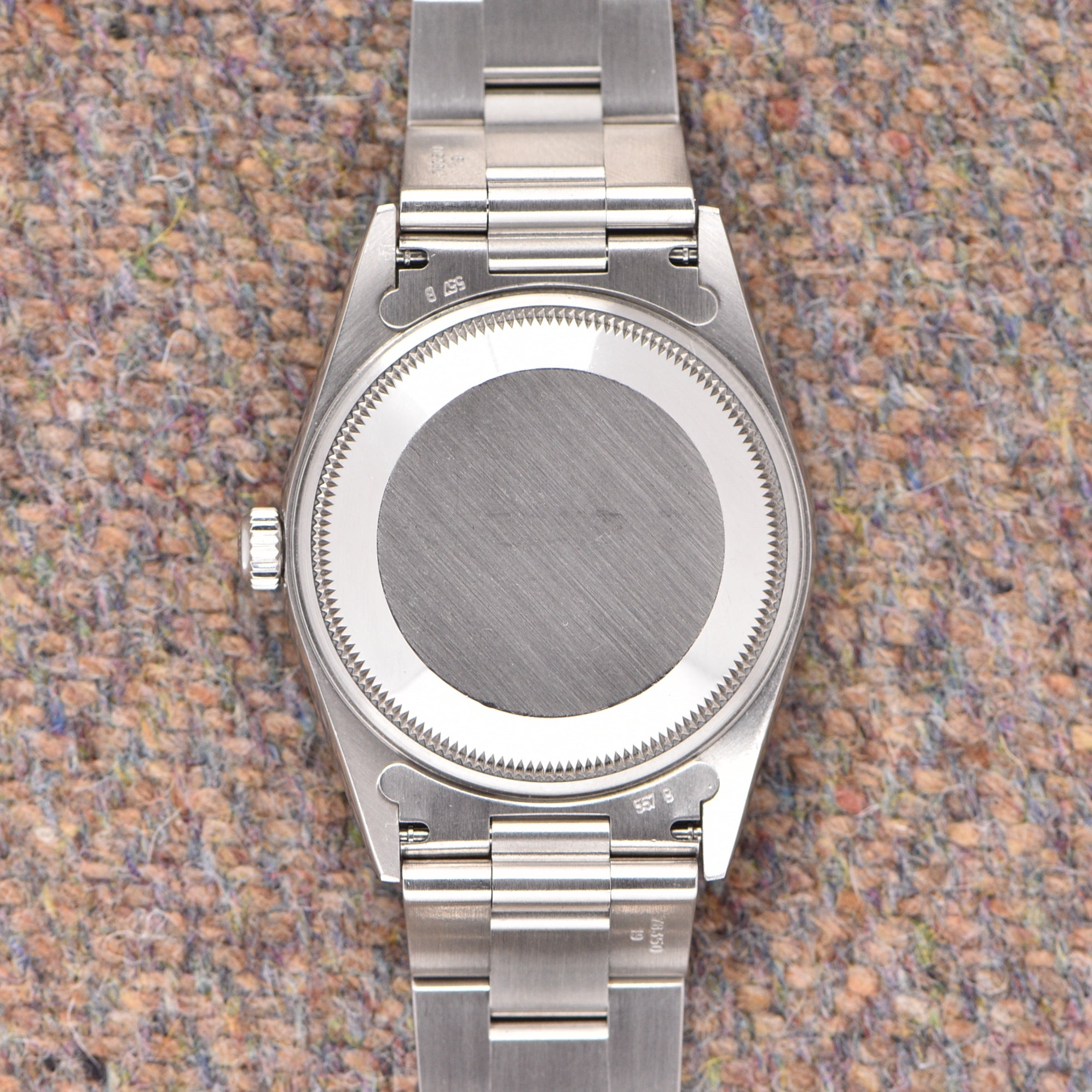
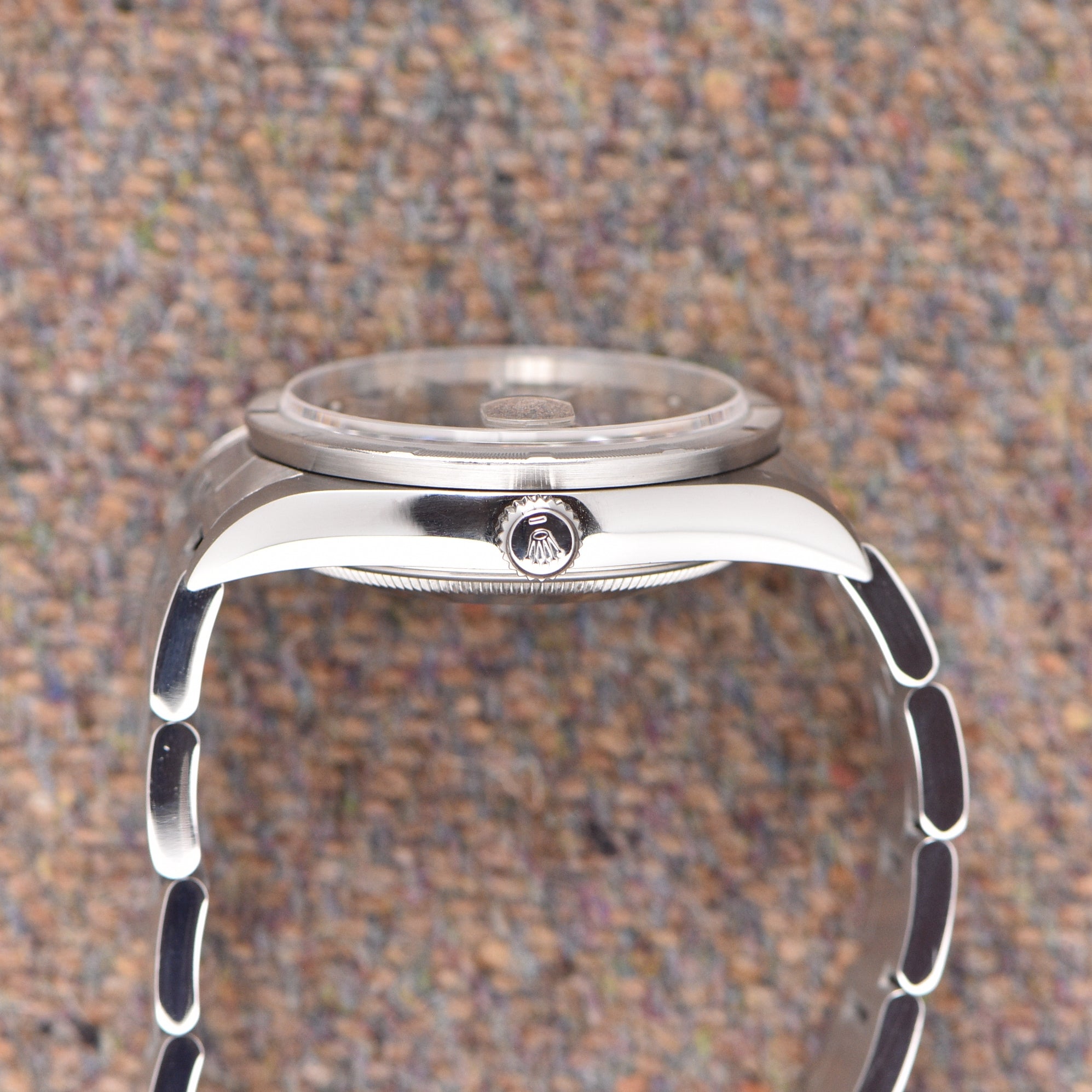
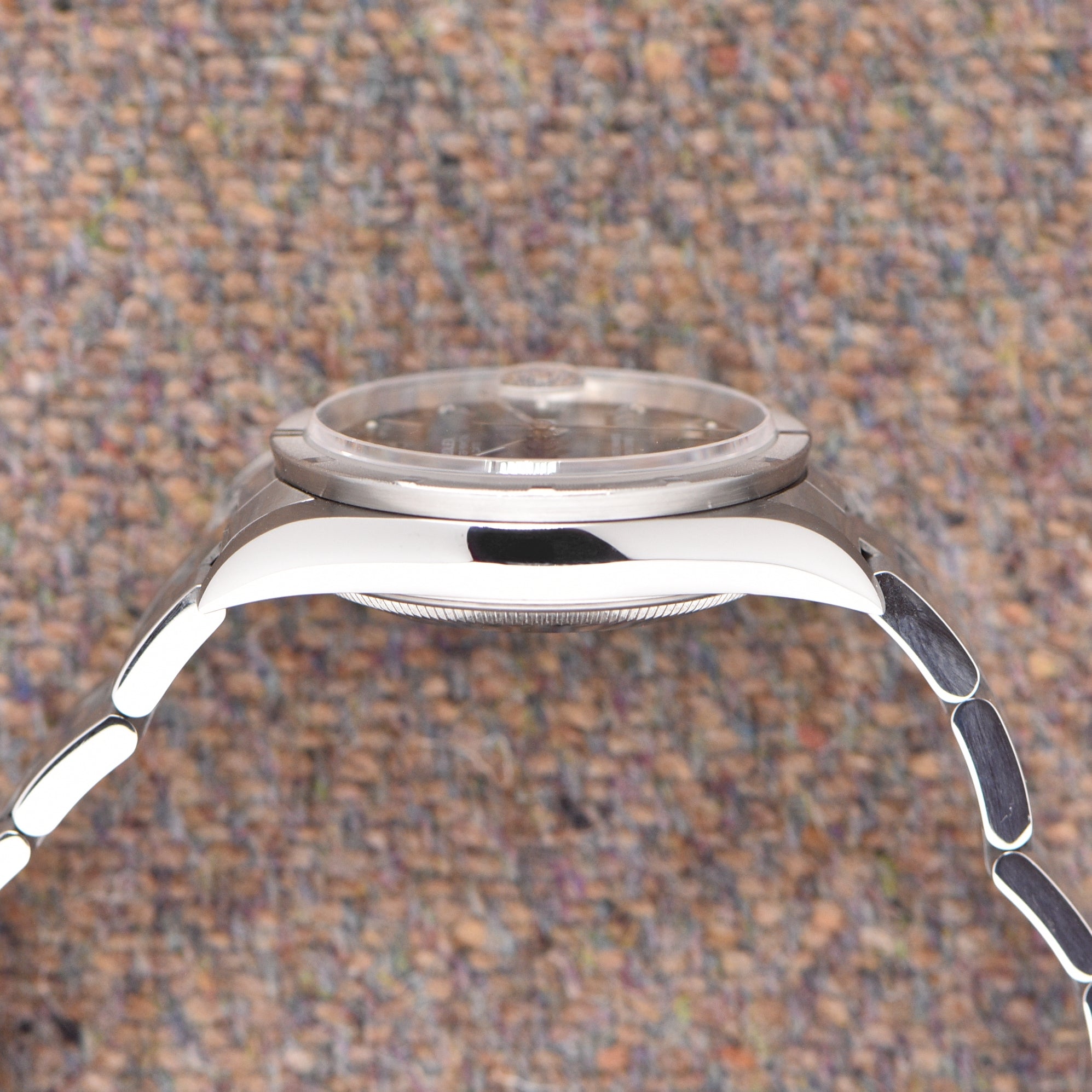
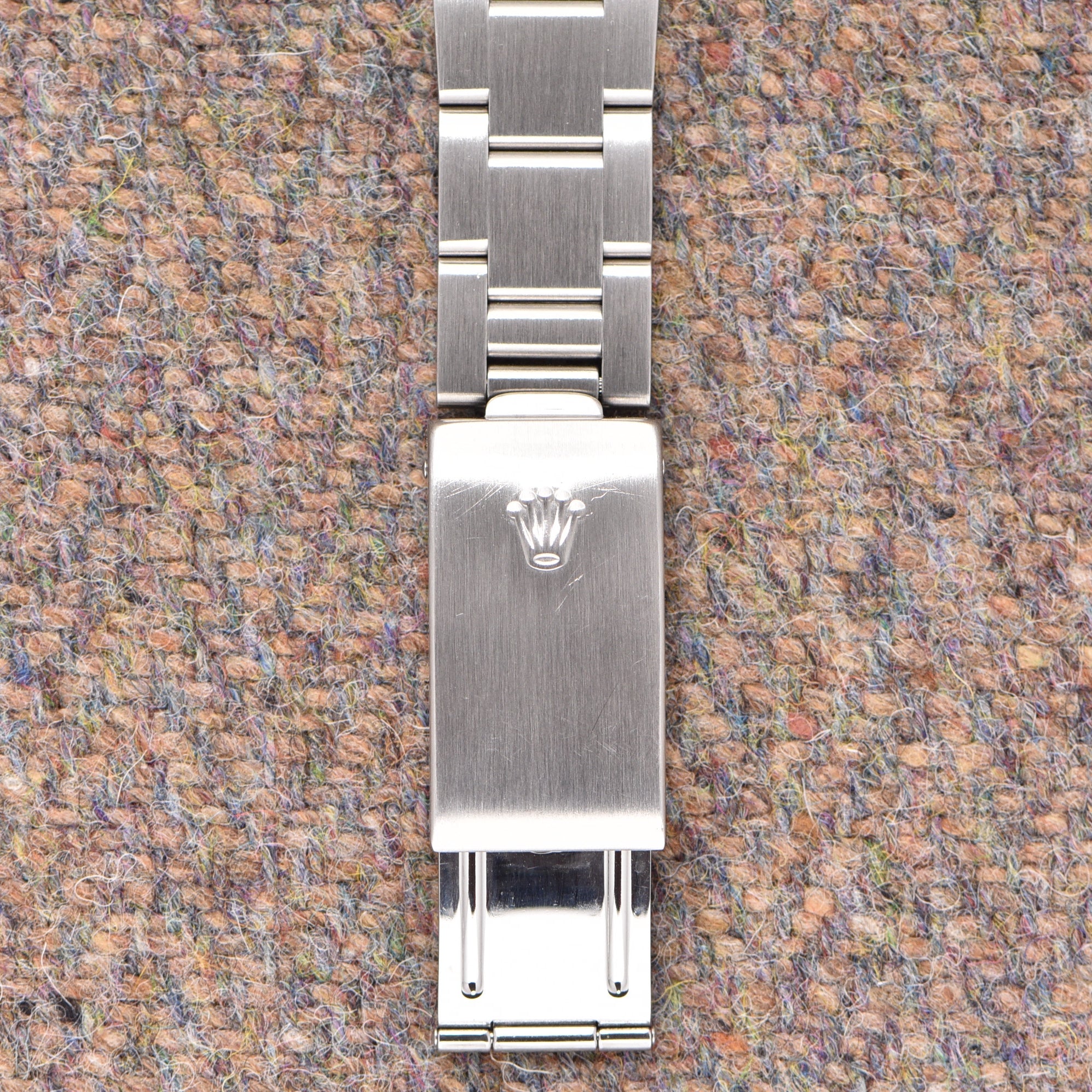
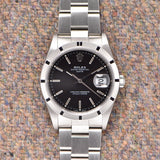
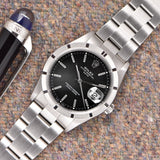
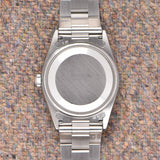
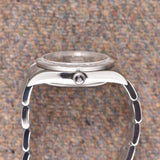

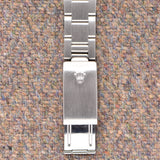
2000 Rolex Oyster Perpetual Date Black Dial
- Reference 15210
- Watch Only
- Specifications
- The Story
- The Brand
Year: 2000
Model: 15210
Case Diameter: 34mm
Lug to Lug: 42mm
Case: Stainless steel
Dial: Black
Movement: Automatic
The case is nice and even on the lugs with sharp edges. The engine turned bezel is just the same. The oyster bracelet is as clean as the case and bezel. The watch has very light wear. The dial, a black sunburst finish, has no visible wear.
The Oyster, launched in 1926, was the first waterproof watch and was worn by Mercedes Gleitze during her swim across the English Channel. The name "Oyster Perpetual" comes from an oyster, which sealed the movement to keep water and dust out. Rolex patented a self-winding movement in 1931, which used a weight to gently wind the watch while worn on the wrist.
The name "Oyster Perpetual" was first used in 1945, combining the robust Oyster case with the self-winding movement. The first Oyster Perpetual Datejust watch was released in 1945, with an automatic date change. The Oyster Perpetuals were launched in 1953, 1956, and 1964, with the Oyster Perpetual Explorer, Day-Date, Milgauss, No Date, and Ladies Perpetual launched in 1964.
"Oyster Perpetual" is now used across almost every Rolex dial, except for the Cellini collection. Each model is built upon the waterproof Oyster case and Perpetual winding of the automatic movement. The current Oyster Perpetual model family is time-only, produced in Oystersteel, and ranges in size from 28mm to 41mm.
Wilsdorf & Davis was initially a watch importer, but by 1908, Wilsdorf had registered 'Rolex' as a trademark. The name was chosen after trial and error, with some believing it was taken from the phrase 'horological Excellence' or because the word sounds like a watch being wound. Wilsdorf was aware of the power of branding and began a long campaign to get the new company name on the watches he exported. The relationship between Rolex and Aegler started the same year that Wilsdorf & Davis set up the business, placing the largest order for wristwatches ever seen. Wilsdorf was attracted by Aegler's commitment to the highest quality, as their movements were extremely accurate and small. In 1910, one of Rolex's models won a First Class Chronometer Certificate from the rating office in Bienne, Switzerland, and in 1914, another piece became the first ever wristwatch to be granted a Class A Chronometer Certificate from the Kew Observatory in England, the only non-marine timepiece to ever achieve it. The firm of Wilsdorf & Davis became synonymous with a commitment to uncompromising excellence.
WWI in 1914 led to the rebranding of Wilsdorf & Davis as Rolex in 1915. The British government imposed a 33.3% tax on luxury goods, forcing Rolex to relocate to Bienne. Despite the war, the wristwatch proved its utility, as it was used by soldiers during combat and in the field. Rolex produced trench watches, using Aegler's small movements for wearability. By the end of the war, wristwatches became a utilitarian accessory for men. In the years between the wars, Rolex asserted its independence, partnering with Carl F. Bucherer to resist the Federation of Swiss Watch Manufacturers. In 1926, Rolex introduced the Oyster case, making wristwatches waterproof, dustproof, and robust. Wilsdorf capitalized on this innovation by installing Rolex Ambassadors, or 'Testimonies', with celebrities as a marketing masterstroke.
During WWII, Switzerland retained its neutrality, meaning that it was one of the few countries not forced to shut down watch manufacturing to supply the war effort. As a result, by the end of hostilities, the Swiss watch industry was way ahead of other nations. Rolex truly came of age in the 1950s by launching some of the most enduring legends in watchmaking, such as the Explorer, Submariner, GMT-Master, Day-Date, and Milgauss.
The quartz crisis of the 1970s and 80s forced the company to change tactics but ultimately repositioned itself as the purveyor of the ultimate luxury lifestyle. Today, the name Rolex is synonymous with refinement, opulence, and personal accomplishment. The Rolex brand as we know it today is the byproduct of an unrelenting drive for excellence and over a hundred years of refinement and development, all in pursuit of the brand’s singular goal of making the world’s best wristwatch.
2000 Rolex Oyster Perpetual Date Black Dial
Authenticity Guaranteed
All our watches are carefully inspected to insure and guarantee the authenticity.
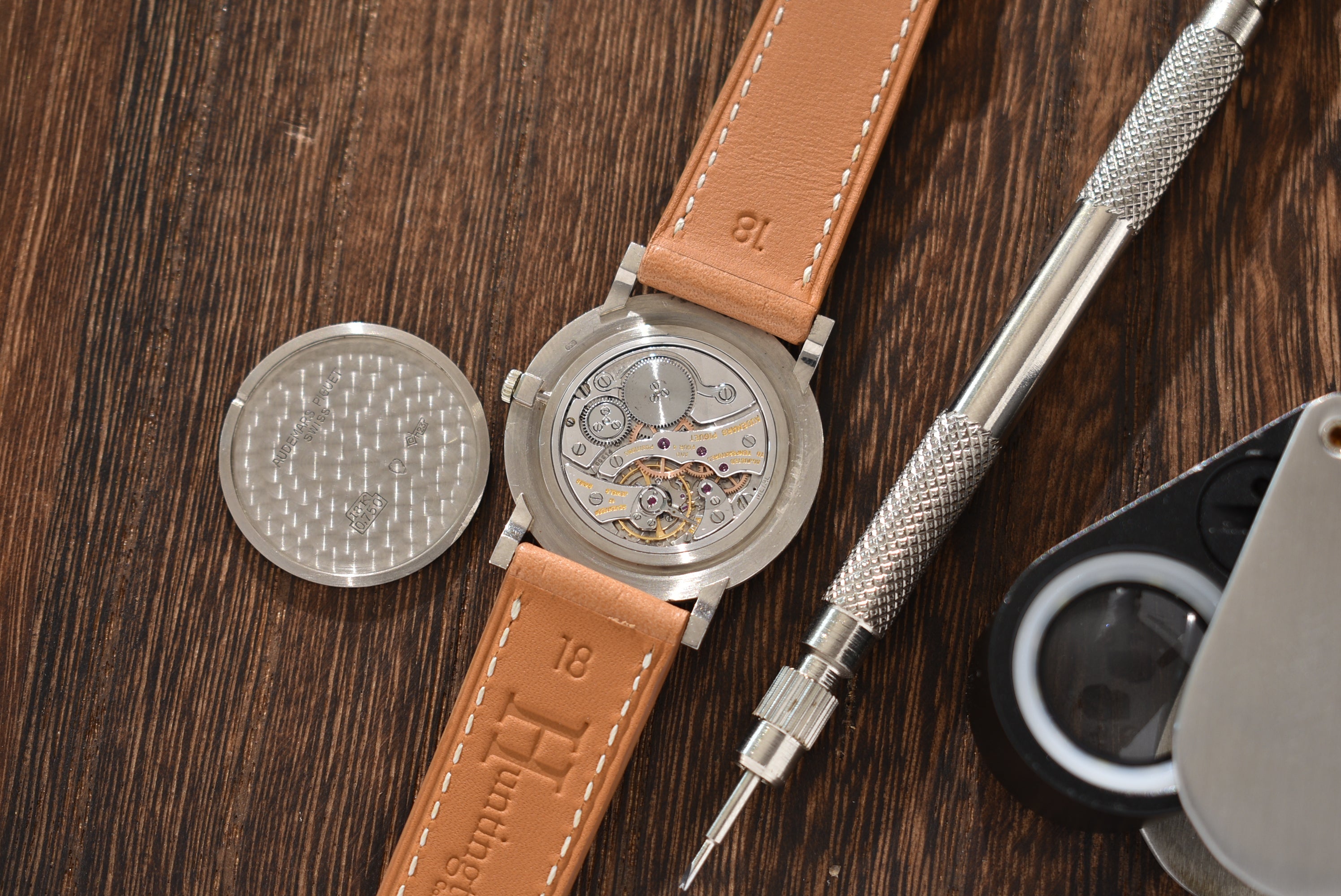
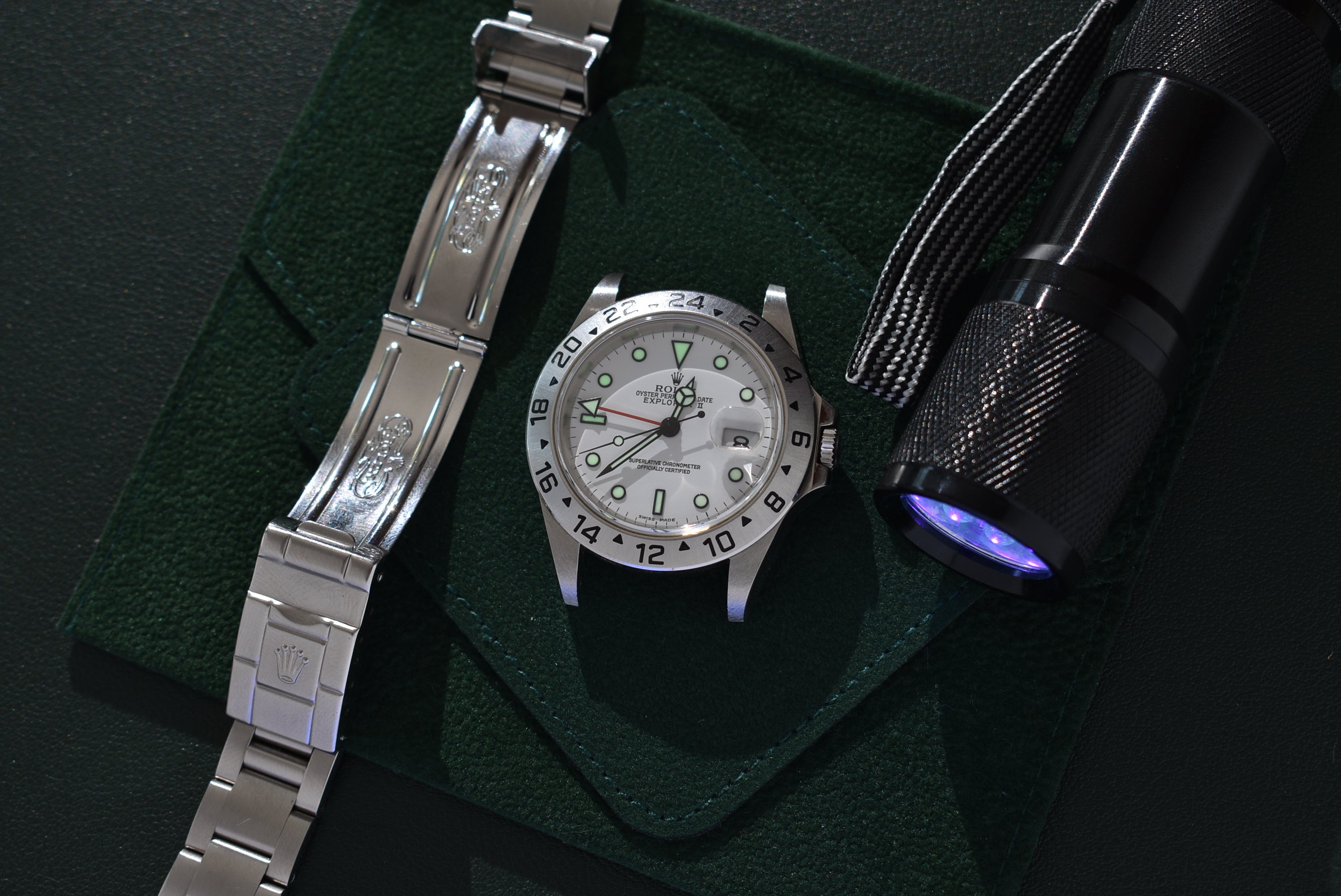
The Details
All our watches are scrutinized during inspection to make sure our descriptions are as accurate as possible.
- Related products
- Recently viewed
